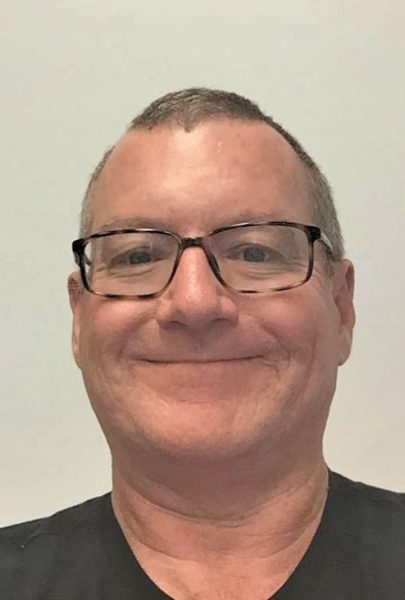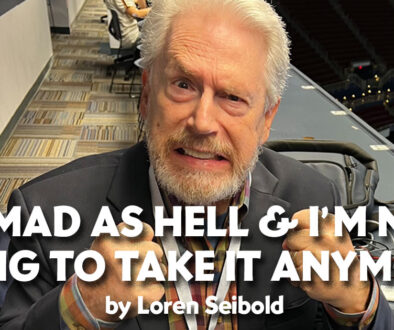The Religious Identity Layer Cake
by David Geelan | 05 May 2023 |
When it comes to sex and gender, some people live in a very simple world. They believe that there are masculine men who desire women, and feminine women who desire men, and both sorts of people want to find their one partner and stay together for life—and that’s all!
And for some, the same is true of faith: in their simple world, there are theists and atheists, and that’s all!
Sexual complexity
As for sex, we know it’s more complicated than that. Biological sex itself is not a simple binary. There are people born intersex or hermaphroditic, partaking of some of the characteristics of both female and male body types. Women ordinarily have an XX chromosome arrangement and men an XY, but there are people born with XXY, XXX, or XYY arrangements, and less commonly with XXYY, XXXY or XXXX. There are also people born with only a single X chromosome and no Y chromosome.
Sex is also not the same thing as gender. Sex is biology, gender is society. Masculinity is a set of behaviours and attitudes associated with maleness in a particular society, and femininity is the same class of things associated with femaleness. These characteristics are different at different times and places: things considered masculine in one society can be considered feminine in another and vice versa. People who are biologically male can exhibit feminine characteristics and females exhibit masculine characteristics. There are also people who exhibit no gender characteristics – agender – or a mix of masculine and feminine characteristics – non-binary.
Desire is even more complicated. The Kinsey Scale is a way of thinking about same-sex and opposite-sex attraction. Around 90-96% of human beings are predominantly opposite-sex attracted, and 4-10% same-sex attracted, but the Kinsey Scale is a continuum, not a binary. Some people are right near the middle and are bisexual, some are most of the way toward one end and have rare attractions to one sex but are predominantly attracted to the other. Women are generally considered to be more fluid in their sexuality than men, and may move along the scale across the lifespan, but this can be true for men as well.
And then some people are not sexually attracted to anyone, and identify as asexual. Sex just isn’t something that’s on their radar. They want platonic friendships, not sexual relationships. Others are aromantic – they may be sexually attracted to people, but not fall in love. Some are both asexual and aromantic – these people sometimes call themselves aroace.
Some people want to find one partner and live with that partner all their lives. Others desire more than one partner at a time. Historically this has tended to lead to ‘cheating’, but increasingly people who have this desire pattern are establishing honest, open polyamorous relationships.
To try to make sense of this complexity, and be able to talk about it in more understanding ways, Luna Rudd created the ‘Attraction Layer Cake’ as a 3-dimensional representation of the continua of desire and sexuality, and Andrea Vos created this representation of it: https://cake.avris.it/ The three axes are (a) sexual desire/romantic attraction, (b) monogamy to polygamy and (c) heterosexuality to homosexuality (the Kinsey scale). A given individual will be able to identify as being in one position, or in a small zone, in relation to each axis and therefore in a particular position with the ‘layer cake’.
While I can identify quite clearly where I fall on these continua, I can’t find it in myself to decide that mine is the only valid and legitimate position and everyone else is wrong! Rather, it’s up to me to try to empathise with and understand people unlike myself… and the more different they are, the more I’ll learn.
Complexities of belief
This has been quite a long explanation for what is essentially an analogy I wish to draw between sexual identity and religious identity. I want to argue that there is (at least!) a ‘religious identity layer cake’ that similarly explores the varieties of religious experience, and that perhaps the recognition that others experience faith and the world differently can lead us to better mutual understanding and reduce harmful conflict.
Discussions around religion on social media often devolve to simple – and often hostile – binaries. Christians and atheists, believers and unbelievers, saints and sinners, the saved and the damned. These are far too simplistic to reflect actual human experience.
For a start, human religion is more complex than monotheism or atheism. There are polytheistic religions such as Hinduism and the ancient Greek and Roman religions, for example. Some argue that even the first few chapters of Genesis are polytheistic, and indeed, much of the Old Testament talks about other gods such as Mammon and Molloch. They’re described as false gods, but as real. There are other views such as pantheism (the universe is God), panentheism (the universe is within God) and deism (God created the universe but no longer intervenes in it), and no doubt many other options. Even this is hard to place on a simple continuum from 0 gods to 1 to 3 to many…
Then there are the degrees of strength with which beliefs are held: there are very strong and certain theists and atheists, and there are agnostics of various shades of ‘I’m not certain’ or ‘we just don’t know enough’. This seems to me like part of a broader personality pattern of a preference for certainty versus a comfortable tolerance of ambiguity.
There are people who are passionate about their religion (or irreligion) and for whom it forms a central part of their identity. They put in a lot of time and thought and resources, and talk about it, and argue about it, and wear the t-shirt or the cross necklace or have the fish bumper sticker, or the ‘coexist’ symbol on their car. Then there are the ‘apatheists’, those apathetic toward religion. In parallel with the aromantics in relation to sexuality who never fall in love, for the apatheists, religion is just not really on the radar. They are not passionately pro or anti any particular religion, they just get on with life without really thinking about it.
There are people who were born into religion and have left it, and people who were born in atheist or indifferent families and have converted to religious belief later in life. People convert from Buddhism to Christianity or Islam to Hinduism, or leave any of a range of religions. Often, but not always, converts of all kinds are more passionate and evangelistic than those who have simply continued on the path they were set on as children.
Beyond binary beliefs
Within Christianity more broadly and Seventh-day Adventism specifically, there are those who would identify as conservative or liberal, or progressive. I grew up in Cooranbong in the 80s during the controversy around Dr Desmond Ford and the Glacier View meetings, with a particular perspective on grace and on the Investigative Judgement, and also consistently heard of the Concerned Brethren (CBs for short), the opposing conservative faction. A binary is too simplistic here: there is at least a continuum, where people might have progressive views on creationism but not sexuality, or vice versa, or might interpret scripture in critical ways on some topics and more literally on others.
The temptation, until we reflect upon it, and until we talk with and listen to and learn from others, is to assume that other people are just like us, really, and that if they claim not to be, they are lying or deluded. If a straight person is unable to empathically understand how a gay person is attracted to people of the same sex, he may assume that gay people are somehow confused or deluded or deceived, rather than understanding that some people are born at the opposite end of the Kinsey scale to him. Similarly, someone who is unable to look beyond a simplistic religious binary will tend to assume that someone who describes a different variety of religious experience is not being genuine.
Religious identity, like sexuality and gender and attraction, is diverse and complicated and wonderful, and our world is enriched as we come to understand and appreciate the differences in those around us.
 Dr. David Geelan is Sue’s husband and Cassie and Alexandra’s dad. He started out at Avondale College, and is currently Professor and National Head of the School of Education, within the faculty of Education, Philosophy and Theology at the University of Notre Dame in Sydney, Australia.
Dr. David Geelan is Sue’s husband and Cassie and Alexandra’s dad. He started out at Avondale College, and is currently Professor and National Head of the School of Education, within the faculty of Education, Philosophy and Theology at the University of Notre Dame in Sydney, Australia.




